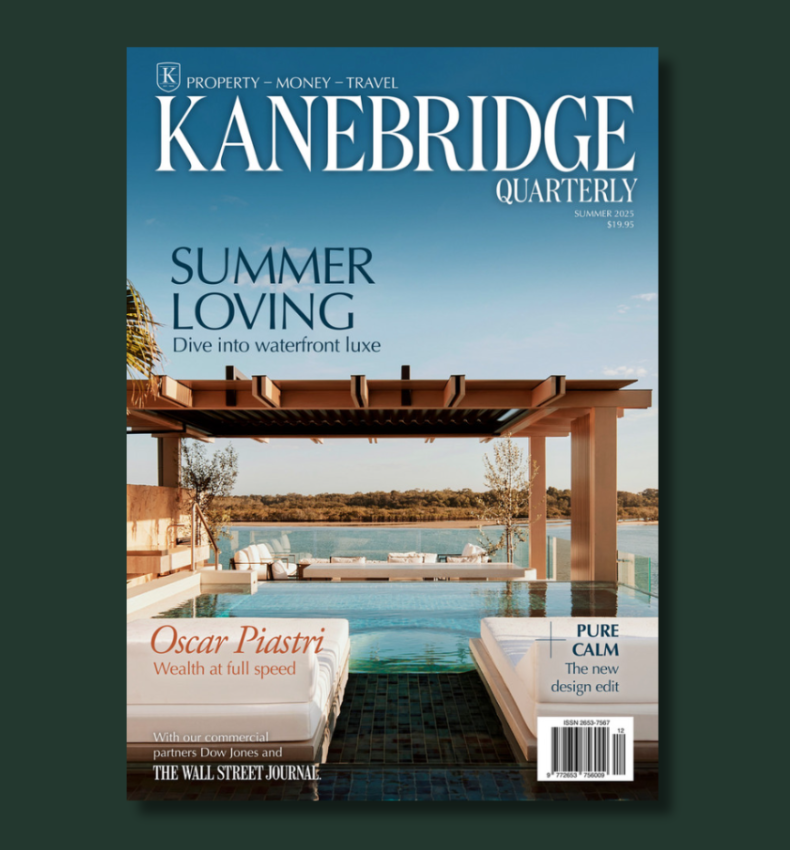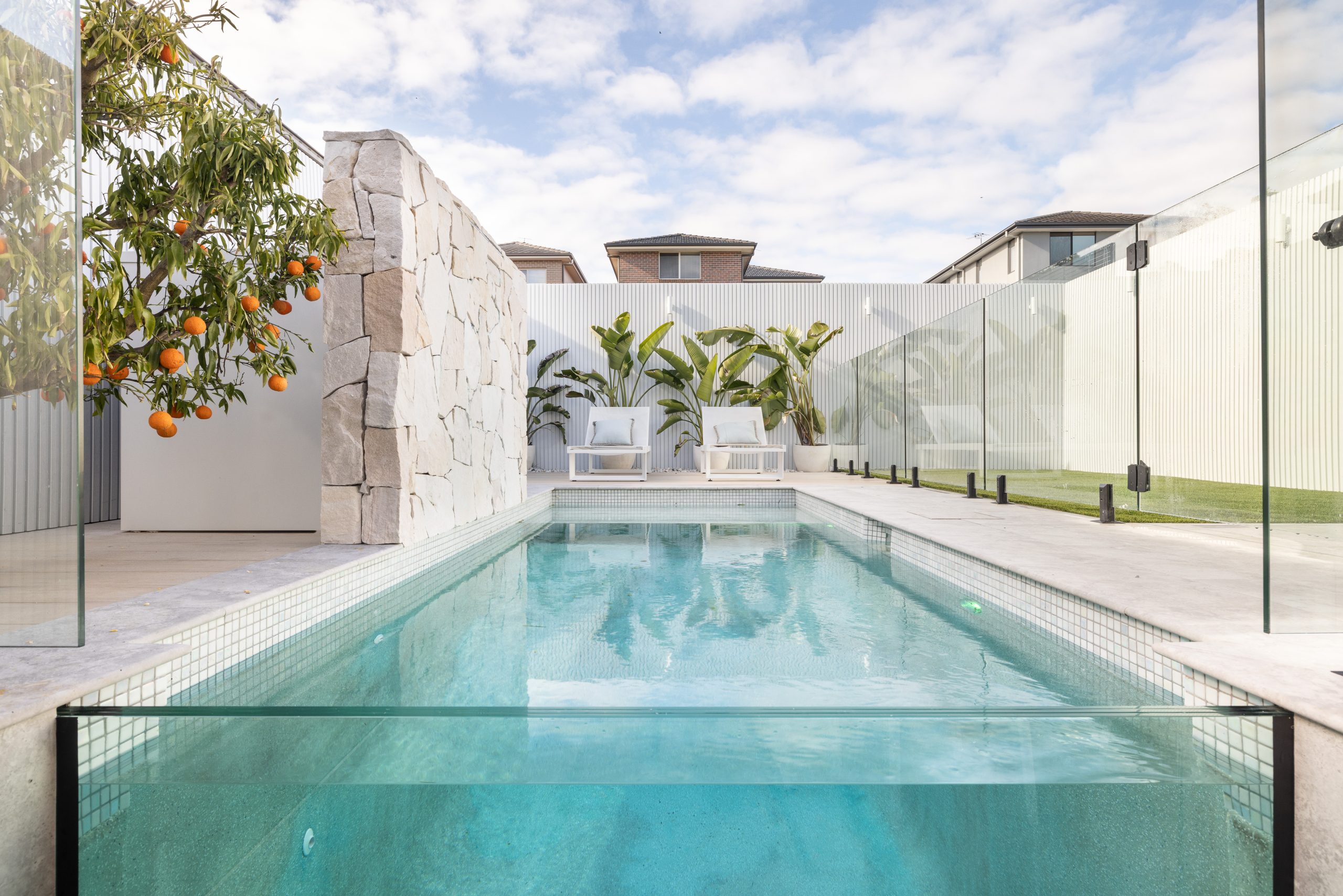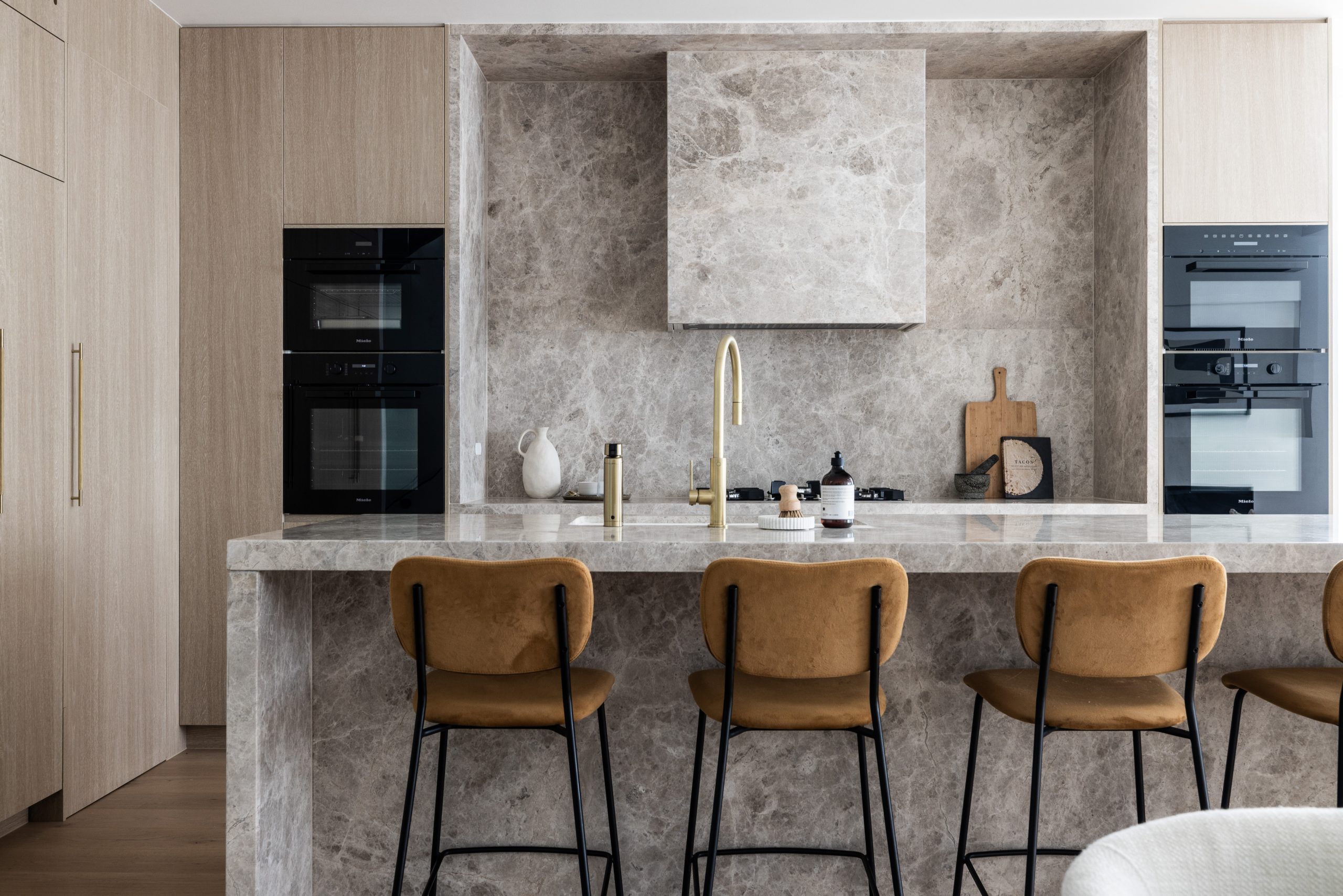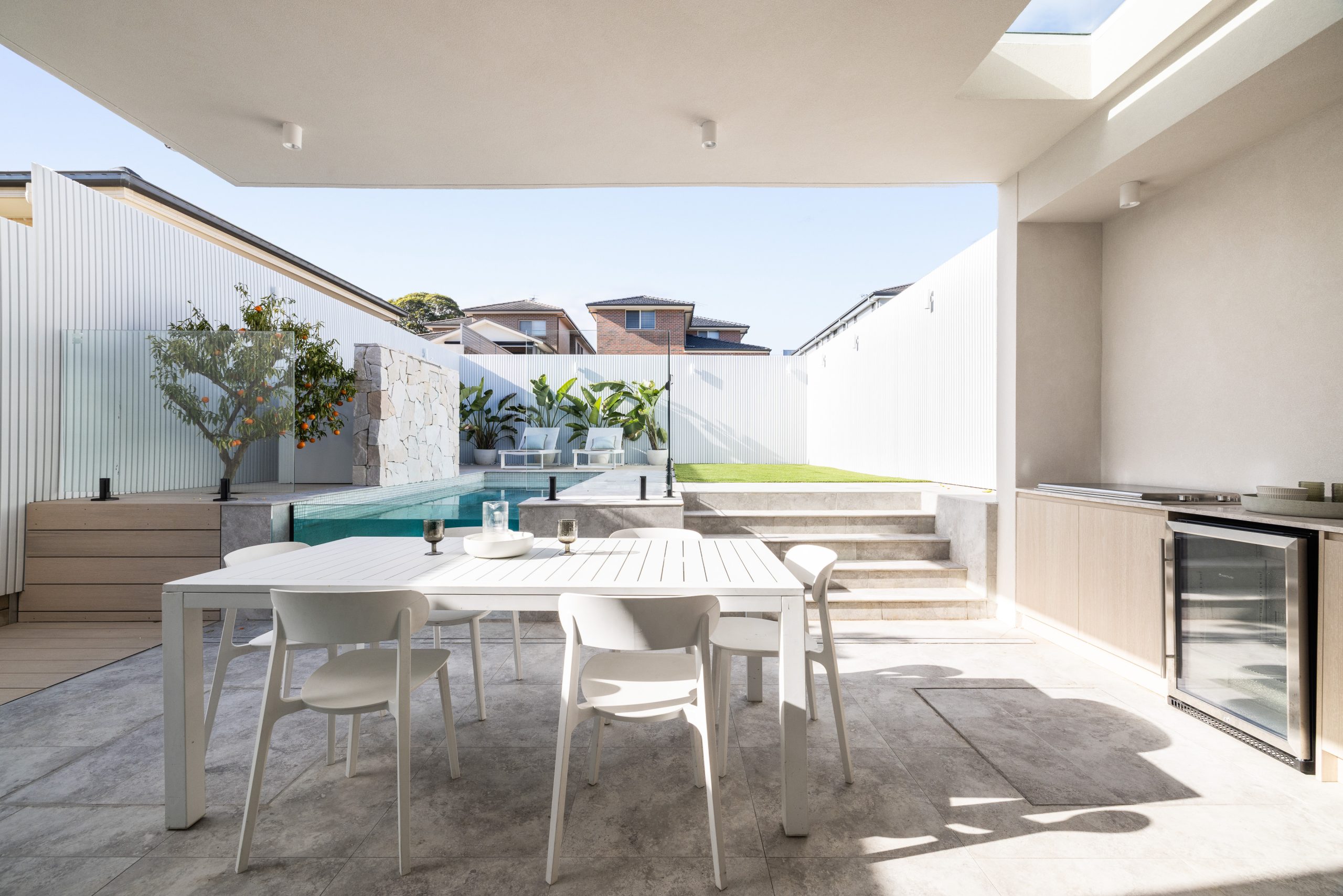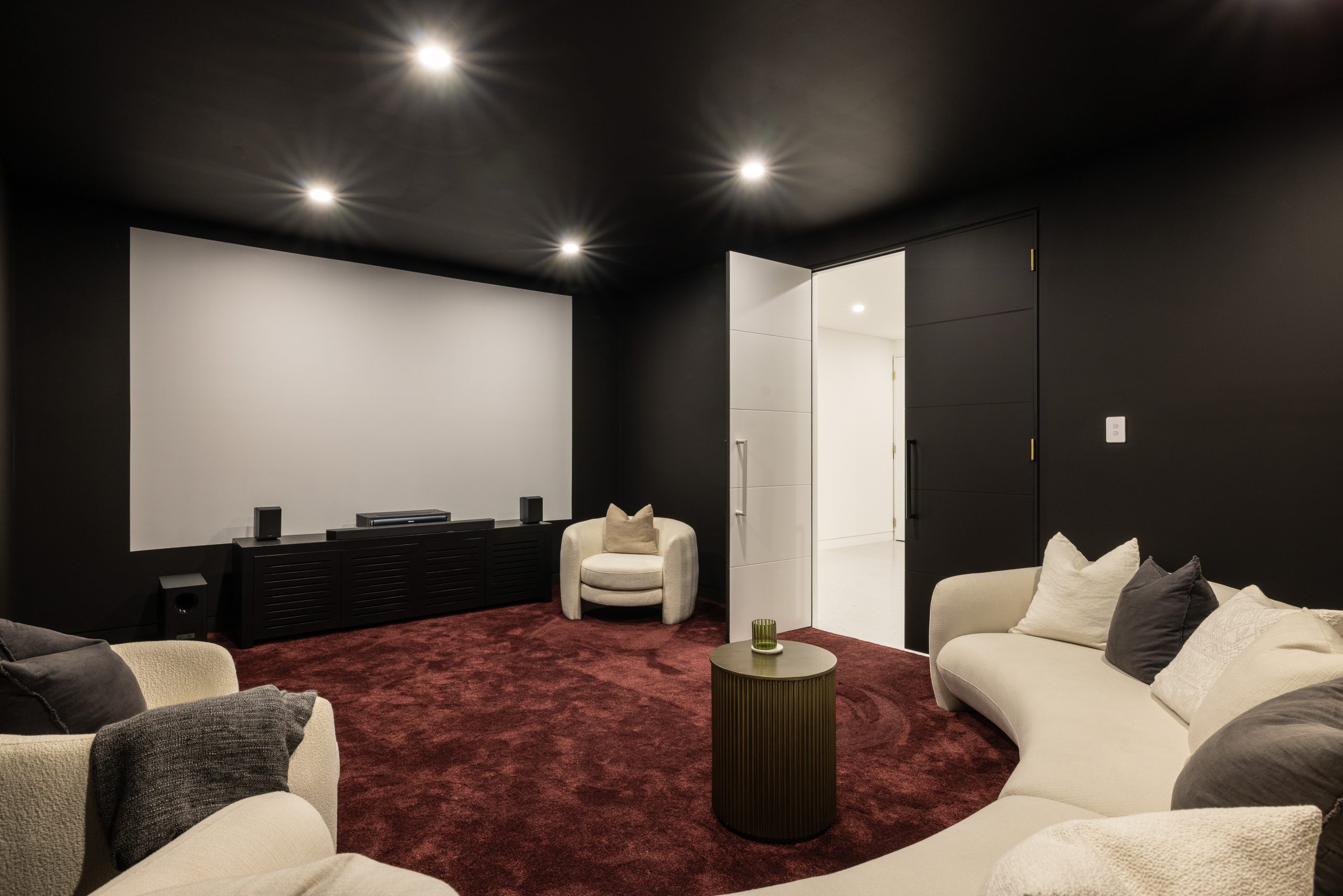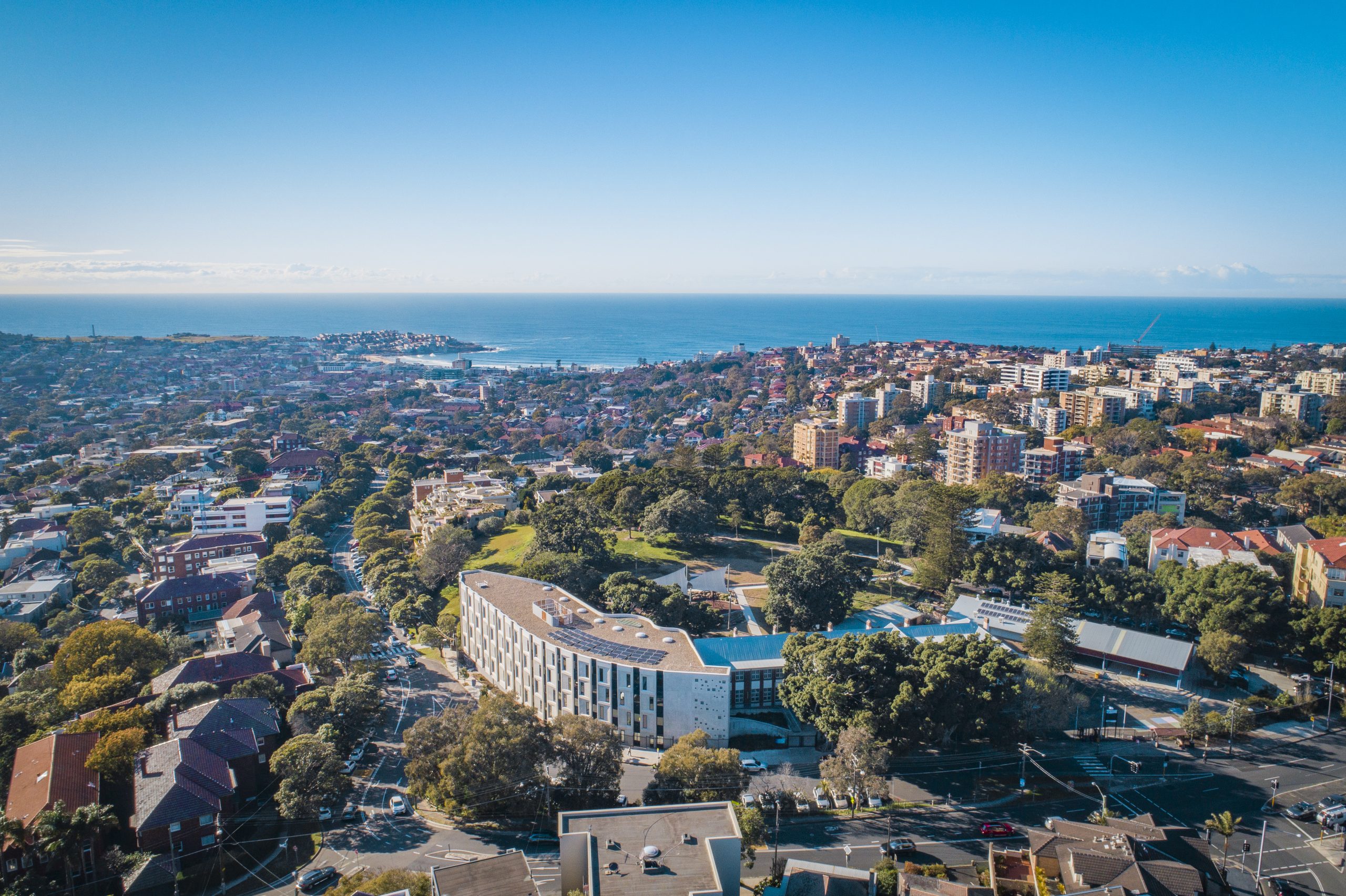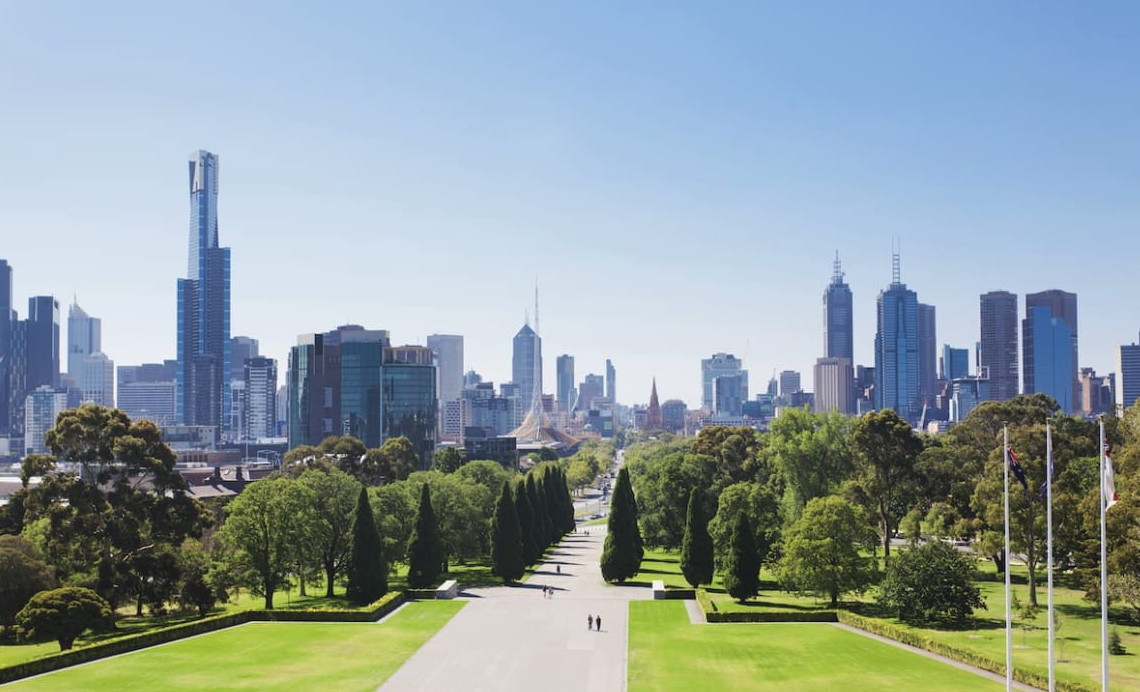SYDNEY LUXURY HOME LISTED WITH A CHEEKY $1 RESERVE
An opulent Ryde home, packed with cinema, pool, sauna and more, is hitting the auction block with a $1 reserve.
In a move that is equal parts audacious and inspired, luxury real estate group Black Diamondz has listed a newly completed five-bedroom mansion in Ryde with a reserve price of $1.
The property at 26 Clermont Avenue is anything but bargain basement – featuring four lavish levels, a concrete structure, a private cinema, a mineral lap pool, a wine cellar, a sauna and even lift access.
Meanwhile, Ryde’s median house price is hovering around $2.5 million.
“This is not just another house. It’s a showpiece,” says Monika Tu, founder of Black Diamondz. “We’re not asking the market to guess its worth; we’re inviting it to experience it.”
Spicing things up further, the sales campaign doubles as a philanthropic effort.
Tu, along with agents Courtney Wong and Blake Morris, is using the high‑profile auction to raise awareness (and funds) for the Children’s Cancer Institute as part of the 2025 Dare to Cure challenge.
“We believe in creating value beyond the transaction,” says Tu. “Shining a light on the Children’s Cancer Institute turns luxury into legacy.”
Property Highlights
-
Five bedrooms, four bathrooms, three en-suites
-
Private cinema, sauna, gym and wine cellar
-
Gourmet kitchen with Miele appliances and butler’s pantry
-
Tundra limestone, Venetian plaster finishes, mineral lap pool
-
Quiet street near top schools, parks and Top Ryde Shopping Centre
Whether the $1 reserve is a marketing masterstroke or the future of auction theatrics, one thing’s sure: this isn’t your average Ryde listing.
Bidding starts with a gold coin. Final sale price? That’s anyone’s guess.
Formula 1 may be the world’s most glamorous sport, but for Oscar Piastri, it’s also one of the most lucrative. At just 24, Australia’s highest-paid athlete is earning more than US$40 million a year.
From gorilla encounters in Uganda to a reimagined Okavango retreat, Abercrombie & Kent elevates its African journeys with two spectacular lodge transformations.
Ray White senior data analyst Atom Go Tian says Sydney’s elite postcodes are pulling further ahead, with Bellevue Hill dominating the nation’s most expensive streets in 2025.
Sydney has cemented its status as the nation’s luxury capital, with Kambala Road in Bellevue Hill being Australia’s most expensive street this year, posting a median house price of $39.35 million.
And, according to Ray White senior data analyst Atom Go Tian, last year’s leader, Wolseley Road, was excluded from this year’s rankings due to limited sales.
“Wolseley Road recorded only three sales this year and was therefore excluded from the rankings, though its $51.5 million median would have otherwise retained the top position,” he says.
Bellevue Hill continues its dominance, accounting for six of the nation’s top 10 streets. Tian says the suburb’s appeal lies in its rare blend of location and lifestyle advantages.
“The suburb’s enduring appeal lies in its rare combination of proximity to both the CBD and multiple beaches, harbour views, and large estate-sized blocks on tree-lined streets.”
Vaucluse remains a powerhouse in its own right. “Vaucluse extends this harbourside premium with even more direct beach access and panoramic water views,” he says.
The gulf between Sydney and the rest of the country remains striking.
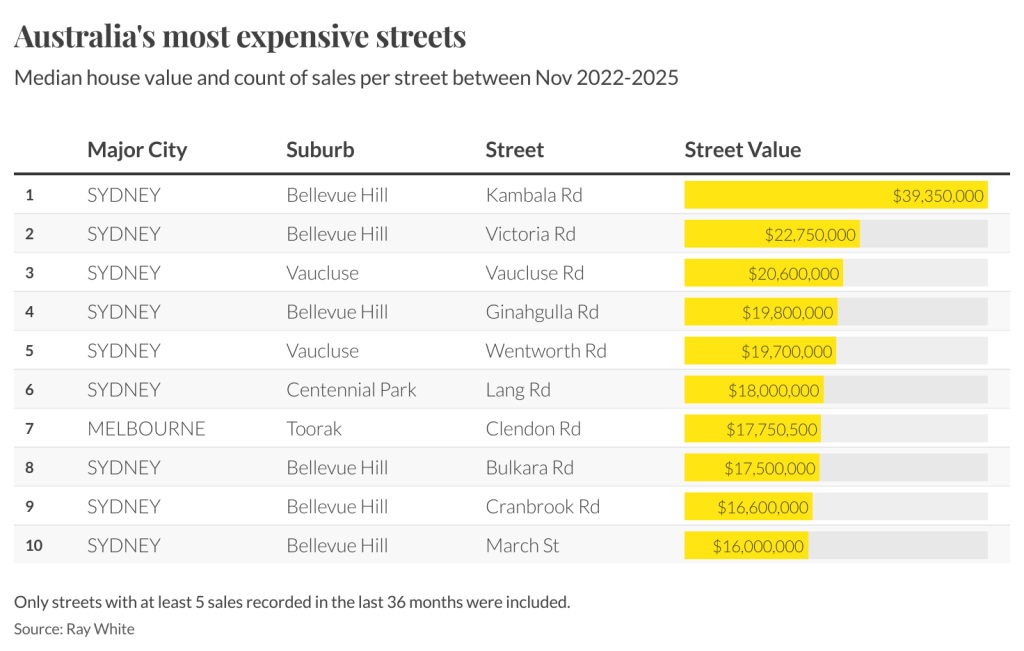
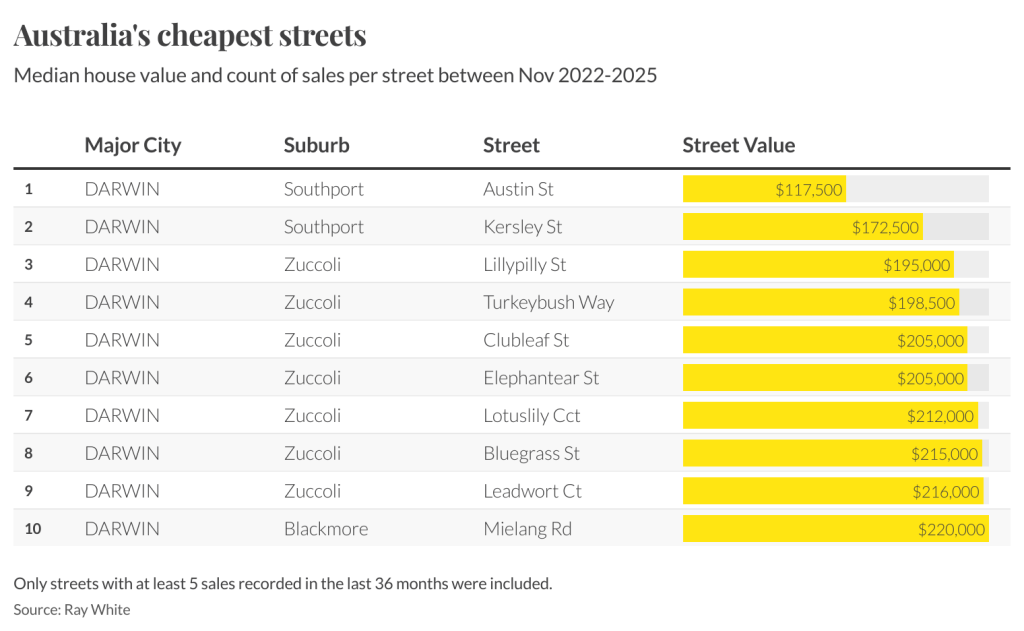
According to Tian, “Sydney’s most expensive streets are more than five times more expensive than the leading streets in Perth and Brisbane, and more than 10 times the premium streets in Canberra and Adelaide.”
He attributes this to Sydney’s economic role and geographic constraints, describing it as “Australia’s financial capital and its most internationally connected city.”
Beyond Sydney, each capital city has developed its own luxury hierarchy. Tian highlights Melbourne’s stronghold in Toorak, noting that “Melbourne’s luxury market remains centred around Toorak, led by Clendon Road, St Georges Road and Linlithgow Road.”
Brisbane’s prestige pockets are more dispersed: “Brisbane’s luxury real estate shows a more diverse pattern,” he says, led by Laidlaw Parade at $6.5 million. Perth’s top-end market remains anchored in the Peppermint Grove–Dalkeith corridor, with Forrest Street at $7.5 million.
He also points to the stark contrast at the lower end of the spectrum. “Darwin presents a mirror image, hosting all 10 of the country’s cheapest streets,” Tian says. Austin Street in Southport sits at just $117,500.
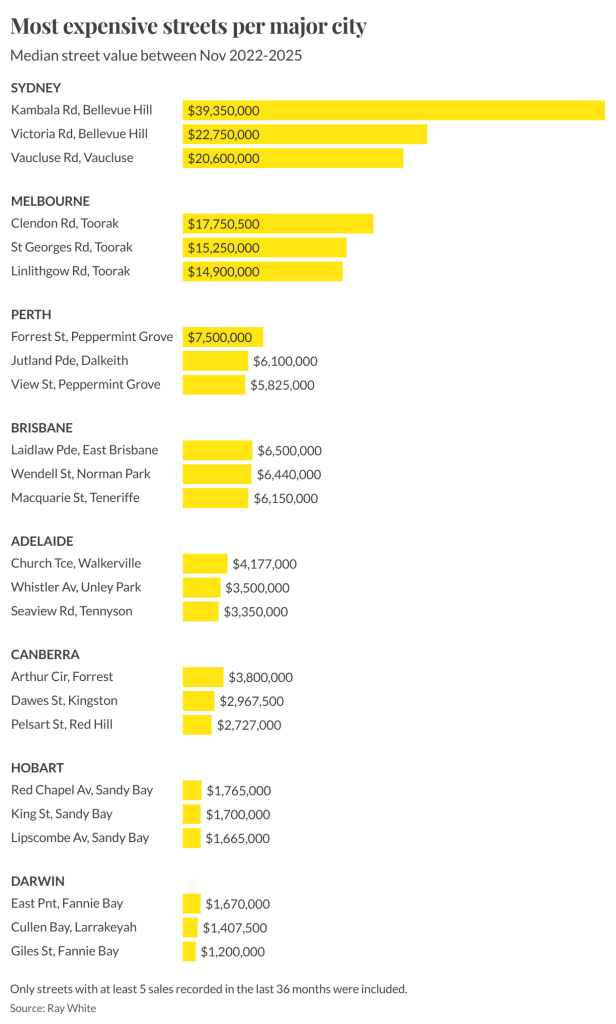

The national spread reaches its extreme in New South Wales. “Sydney emerges as the most polarised market, spanning an extraordinary range from Railway Parade in Katoomba at $385,000 to Kambala Road’s $39.35 million,” Tian says.
Methodology: Tian’s analysis examines residential house sales between November 2022 and November 2025, with only streets recording at least five sales included. Several streets with higher medians, including Black Street, Queens Avenue and Clairvaux Road in Vaucluse, were excluded because they did not meet the sales threshold.
ABC Bullion has launched a pioneering investment product that allows Australians to draw regular cashflow from their precious metal holdings.
Australia’s market is on the move again, and not always where you’d expect. We’ve found the surprise suburbs where prices are climbing fastest.



